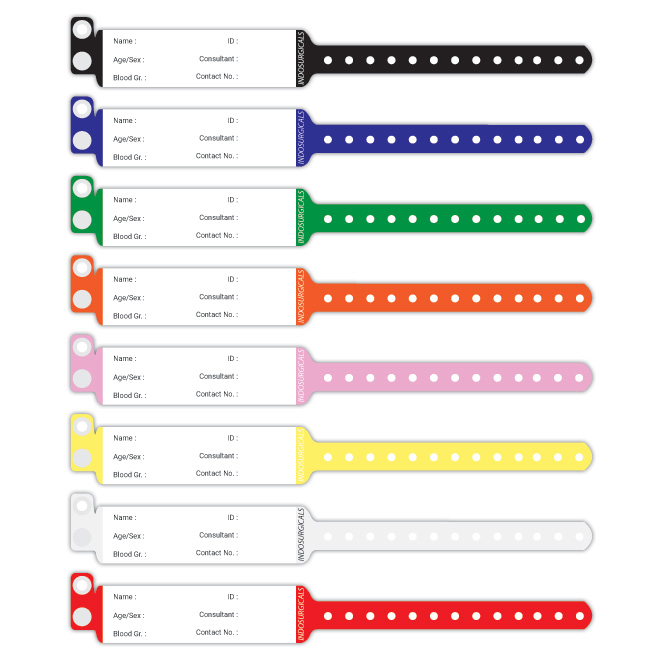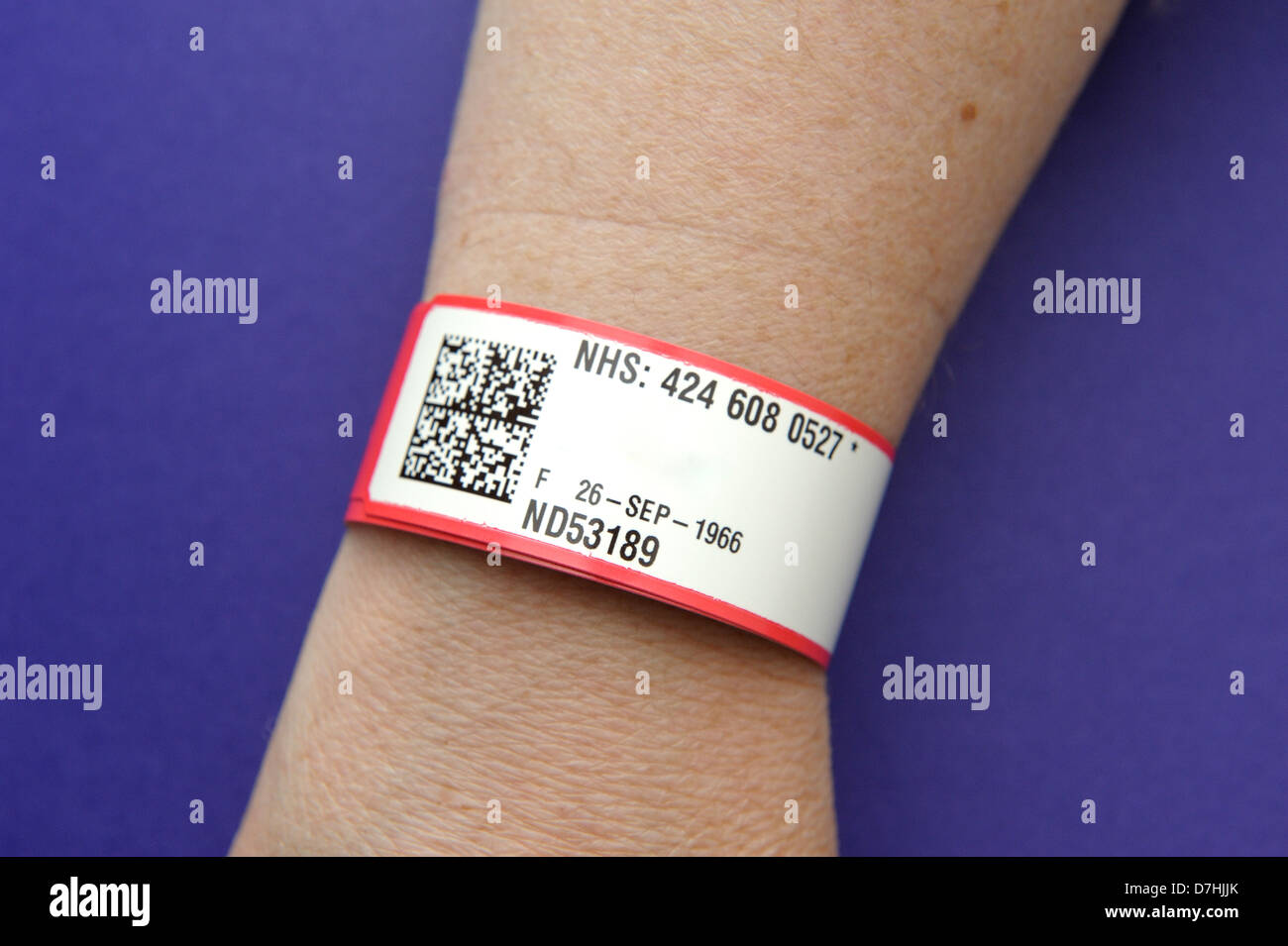The Role of a Patient Identification Band in Improving Hospital Patient Tracking Systems
The Role of a Patient Identification Band in Improving Hospital Patient Tracking Systems
Blog Article
Checking Out the Various Sorts Of Patient Identification Band Made Use Of in Clinical Facilities
In the elaborate world of medical care, the crucial duty of Patient Identification bands usually goes undetected. These bands, varying from easy paper wristbands to advanced RFID bands, create the backbone of Patient safety and security methods, making sure precision in Patient Identification. The substantial variety of these bands, each with its distinct benefits and constraints, is frequently ignored. As we navigate with this subject, one may get insight right into the refined complexities and crucial value of such bands in medical centers.
Understanding the Value of Patient Identification Bands
While they might appear like mere accessories, Patient Identification bands play a vital function in clinical facilities. These bands offer as a vital tool for validating Patient identity, avoiding medical errors associated to misidentification. Patient Identification bands also help in simplifying management tasks, making sure accurate record-keeping and billing.
Traditional Paper Wristbands: Their Use and Limitations
Traditional paper wristbands have been a staple in Patient Identification throughout different medical centers. While their use is extensive, they nurture particular constraints that might impact their efficiency in Patient management. This section will concentrate on the extent of their application and the integral disadvantages connected with their use.
Paper Wristbands: Usage Range
In the realm of Patient Identification, paper wristbands have long held an essential role. These bands are generally used in outpatient settings, where the Patient's stay is short-lived. In spite of innovations in innovation, the humble paper wristband remains a economical and trusted remedy for Patient Identification in numerous healthcare circumstances.
Limitations of Paper Wristbands
Regardless of their extensive use, paper wristbands are not without their drawbacks. In addition, paper wristbands commonly do not have the technological abilities of even more modern-day alternatives, such as barcoding or RFID chips, restricting their capability to merely displaying composed info. Paper wristbands can trigger discomfort or skin irritability to some individuals, particularly when put on for prolonged periods.
Barcoded Wristbands: Improvements in Patient Identification
While Patient Identification has actually long been an important facet of medical care, the advent of barcoded wristbands signifies a considerable jump forward. These bands take advantage of the simplicity of barcoding technology, permitting Patient info to be rapidly checked and accessed. They boost the rate and accuracy of Patient Identification, decreasing the risk of medical errors connected to misidentification. Barcoded wristbands are affordable, easy to generate, and eliminate handwriting errors common with hand-operated systems. They are not without restrictions. While they use enhancements over typical bands, the barcode can come to be smudged or used, providing it unreadable. Despite this, barcoded wristbands stay an important tool in contemporary healthcare settings, symbolizing the junction of technology and Patient treatment.
Superhigh Frequency Identification (RFID) Bands: a Step Towards Futuristic Healthcare
The evolution of Patient Identification bands has brought regarding the introduction of Superhigh frequency Identification (RFID) Bands (patient identification band). These innovative tools existing crucial benefits for healthcare facilities, supplying a much more effective and technically advanced methods of Patient Identification. The execution of RFID in healthcare is a considerable action in the direction of a much more advanced method to Patient monitoring and security
Recognizing RFID Bands

RFID Bands: Secret Advantages
Accepting a future where innovation and health care merge, radio regularity Identification bands provide a number of key advantages. Mainly, these bands improve Patient safety and security by supplying precise, instantaneous Identification, thereby reducing clinical errors. RFID bands can store a substantial quantity of Patient information, consisting of case history and allergic reactions, enabling personalized treatment. They additionally improve management jobs, as the automated data access replaces hands-on procedures, improving efficiency look these up and decreasing documents. RFID bands supply real-time tracking of patients, essential in high-risk environments such as surgical procedure or extensive treatment. These bands are immune and resilient to environmental variables, ensuring constant capability. On the whole, RFID bands represent a considerable advancement in Patient Identification innovation, profiting both patients and health care service providers.
Implementing RFID in Health Care
As we enter a highly innovative period, the implementation of RFID bands in healthcare becomes progressively crucial. These bands supply a smooth method to track and recognize people, guaranteeing their safety and security and boosting performance in treatment procedures. check these guys out RFID bands provide many benefits over typical Identification approaches. They can save a large quantity of information, consisting of the Patient's case history and treatment strategies, which can be easily accessed by health care suppliers. This data helps doctors make notified choices concerning the Patient's therapy strategy. RFID bands lower medical mistakes by giving precise Patient Identification, which is crucial in avoiding misdiagnosis or wrong medication management. Therefore, the application of RFID bands is a considerable step towards boosting Patient safety and security and medical care distribution.

Color-Coded Wristbands: Assisting in Quick and Accurate Diagnosis
In the bustling environment of a medical facility, color-coded wristbands have actually arised as vital tools for swift and accurate Identification of a patient's clinical problem. These wristbands, worn by individuals, lug particular shades that correspond to various clinical conditions or standings. This system is designed to offer instant aesthetic cues to health care service providers, enhancing Patient safety and security and care high quality.
Techniques for Effective Execution and Management of Patient ID Bands
Attaining ideal use of Patient Identification bands demands a well-structured method for their implementation and monitoring. Patient education and learning is likewise essential; patients need to understand the objective of the bands and the requirement for their consistent wear. It's necessary to have a backup strategy in place, such as barcode scanning or biometrics, to make certain that Patient Identification is never jeopardized.
Conclusion
Patient Identification bands are critical in medical centers to make sure security and precision. Efficient implementation and monitoring of these bands can substantially minimize clinical errors, boost performance, and improve total Patient care.
These bands, varying from straightforward paper wristbands to advanced RFID bands, why not check here form the foundation of Patient security protocols, making certain accuracy in Patient Identification.The evolution of Patient Identification bands has actually brought regarding the emergence of Radio Frequency Identification (RFID) Bands. On the whole, RFID bands represent a significant advancement in Patient Identification modern technology, profiting both patients and medical care companies.
RFID bands lower medical errors by giving precise Patient Identification, which is critical in preventing misdiagnosis or wrong medication management. Patient education and learning is also crucial; people need to comprehend the function of the bands and the demand for their consistent wear.
Report this page